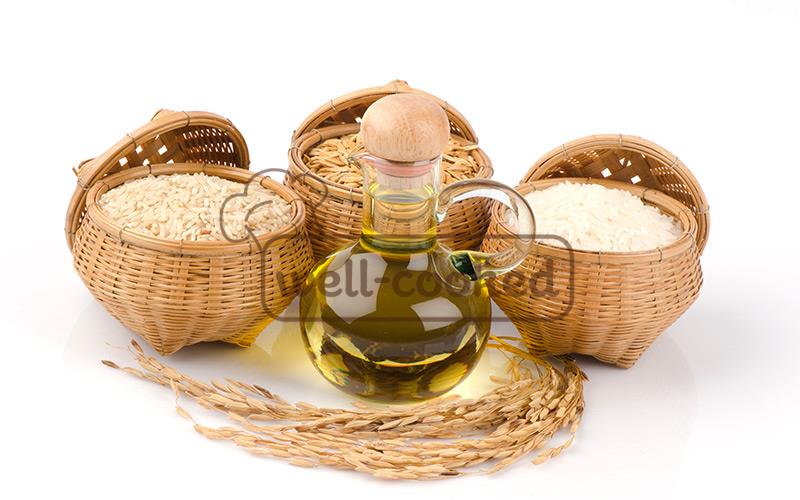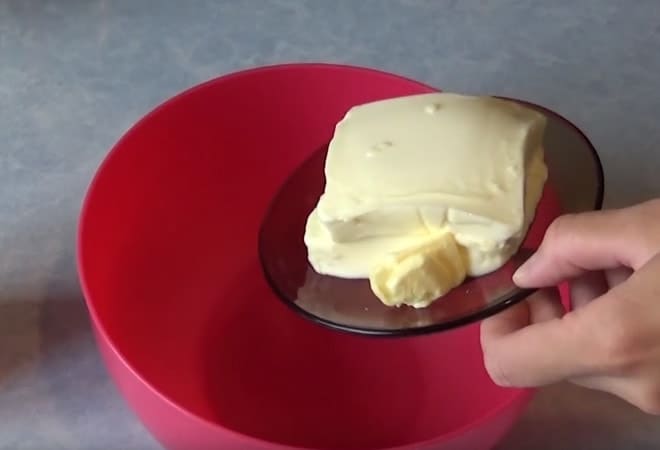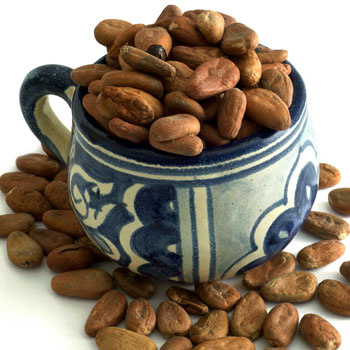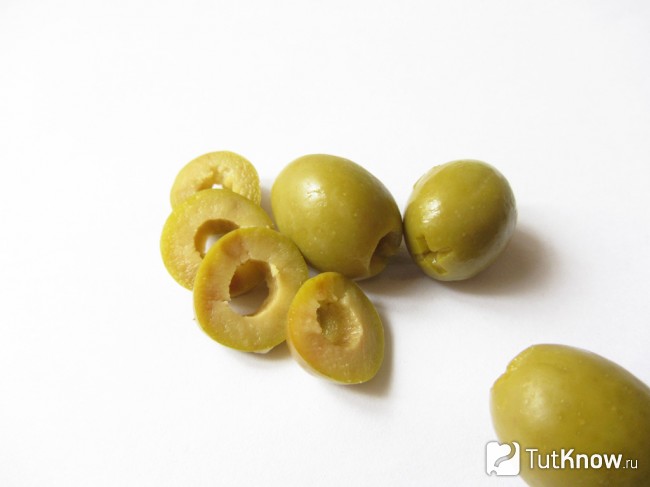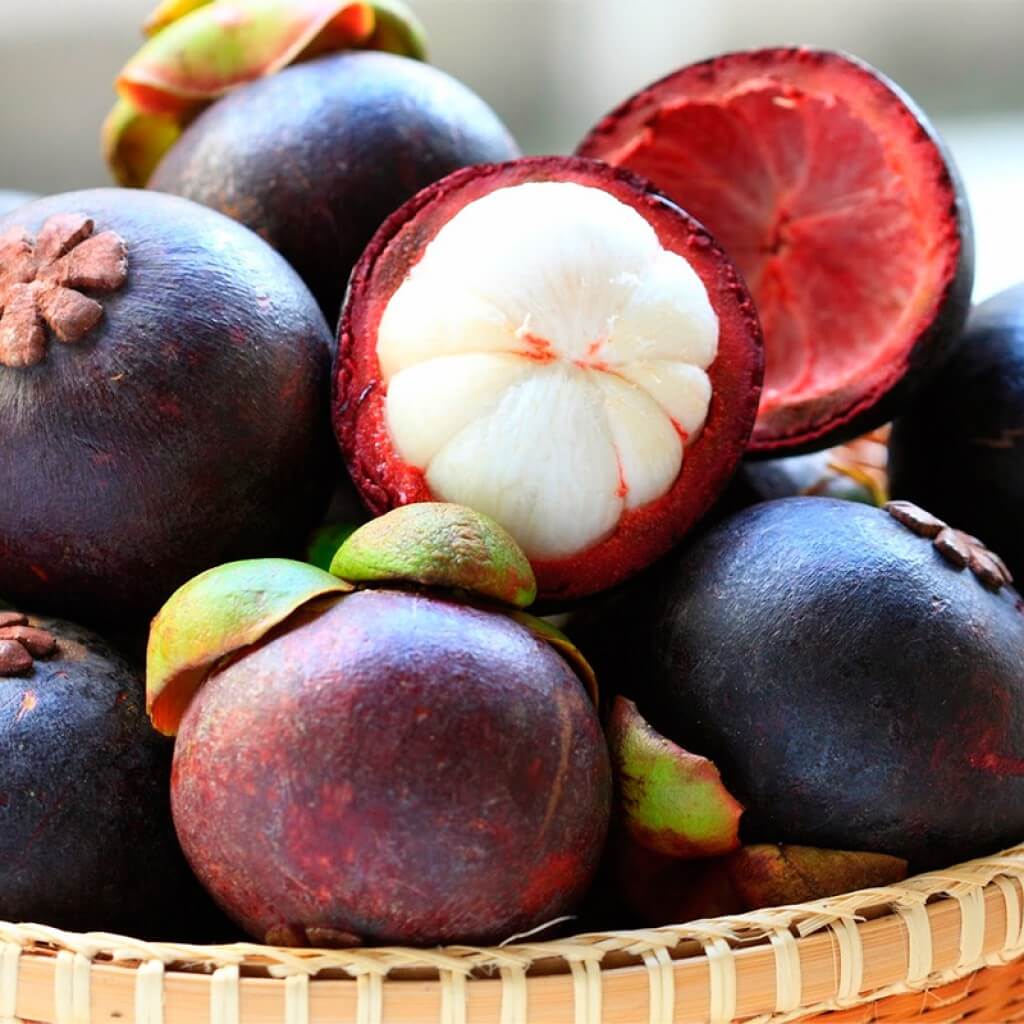Eastern treat - churchkhela. What it is? Home recipes
Oriental cuisine is known for its delicious and original dishes. But churchkhela is at the head of the Caucasian sweets. This traditional oriental delicacy has been known since time immemorial. During archaeological excavations, vessels of a special form with inscriptions were discovered that indicate that churchkhela was transported in these vessels. However, despite such a long history of existence, the tradition of making this delicacy has survived to the present day. Churchkhela is based on nuts (walnuts, hazelnuts, almonds) and juice, most often grape, although you can use pomegranate, apple and others - it will be delicious anyway. The manufacturing techniques of churchkhela in different areas are significantly different, hence the diversity of taste.
How to cook churchkhela at home
Churchkhela at home, cooked according to old recipes - a wonderful treat. Walnut slices are strung on a thread, after which it is all dipped in a bowl with thickened boiled grape juice, which should cover each nut. Then the thread is removed and dried in the sun. After a few hours, the procedure is repeated until a layer of a couple of centimeters forms on top of the nuts, after which the thread with the nuts is dried in the sun for two weeks. Churchkhela is then put in boxes for two to three months, after which the delicacy acquires a wonderful taste and appearance - nuts covered with sweet, dried grape juice.
Useful properties and caloric value of churchkhela
As you know, churchkhela is not only tasty, but also healthy. In ancient times, soldiers took it with them on a camping trip - this product is very nutritious and unpretentious in storage.
- Nuts contain 2-3 times more potassium, calcium, phosphorus, magnesium and iron than in fruits, and the protein content is 16-25%.
- Grapes ranks first in the content of easily assimilated glucose and fructose (12-18%). In addition, 100 gr. contains 0.8-1% of organic acids and more than 20 trace elements, 250 mg of potassium, 45 mg of calcium, 22 mg of phosphorus, 17 mg of magnesium, iron, cobalt and other minerals, as well as vitamins necessary for normal functioning of the body. Grape juice is considered one of the most valuable medicinal, dietary and food products. Pectin substances contained in grapes in large quantities are able to lower cholesterol. Therefore, it is useful for diseases of the lungs, stomach, liver, gout, coronary heart disease, etc. Thanks to its antioxidant properties, grapes are used to prevent cardiovascular and oncological diseases. Studies have shown that the composition of grapes is similar to mineral water. Therefore, its juice, refreshing and toning, has a therapeutic effect.
- Wheat used to make churchkhela contains 50-70% starch and carbohydrates, essential amino acids and protein, vegetable fats and fiber. In addition, it contains the most important trace elements and vitamins.
 A lot of useful substances contained in the treat, not only improves well-being, but also brings a huge charge of vivacity. Churchkhela calorie content is 410 kcal per 100 g. product. However, this dish, having many advantages, has a number of contraindications.
A lot of useful substances contained in the treat, not only improves well-being, but also brings a huge charge of vivacity. Churchkhela calorie content is 410 kcal per 100 g. product. However, this dish, having many advantages, has a number of contraindications.
Churchkhela contraindications
This high-calorie product is not recommended for obese people. Churchkhela should not be used for patients with diabetes. Liver cirrhosis, urination disorders, the second half of pregnancy, advanced forms of tuberculosis, even allergic reactions to nuts and grapes can serve as contraindications. In these cases, you should consult your doctor.
But first of all, churchkhela is a delicacy that, when used in reasonable quantities, can deliver a lot of positive emotions. A kind of charge of vivacity, which is so necessary for residents of both a large metropolis and a small town, where stress lies in wait at every step of the person. Delicious, compact and at the same time nutritious - it was not for nothing that churchkhela was taken on a campaign by warriors in ancient times, when the preservation of strength and health was most important.
Arriving on vacation in the southern regions, we often see for sale bright "pigtails" stuffed with nut and fruit filling. It is unlikely that there will be a person who has not tried this delicacy, which is a national Georgian treat. It is called churchkhela. What is it and what does it eat with? Here are the main issues that will be covered in the article.
Cognitive information
The birthplace of fruit sausages is Georgia. A healthy and tasty dessert is more than one thousand years old. Archaeologists have repeatedly excavated and found ancient clay jugs of the ancient era with unique inscriptions testifying to the storage of eastern treats in them. Historians put forward the version that the dish saved the troops from starvation.
This is like our Russian stew, which can be used for several years. Churchkhela’s oriental sweetness does not rot for a long time, being a source of valuable vitamins for the body. In addition, the dish does not take up much space and is light in weight, which is very convenient when hiking. Here are how many interesting facts you learned about the product.
The technology of its manufacture is subject to our women. The formulation allows the presence of different nuts: hazelnuts, almonds, walnuts, cashews. It is not forbidden to mix with fruits, for example, kiwi, prunes, apricot kernels, peach. You can dream up on this topic as you like. The grape mass, called the Tatars, remains unchanged. Made from granulated sugar, flour and juice. Learn the secrets of cooking later.
A few words about the benefits

In addition to its incomparable taste, churchkhela is highly beneficial. What is it, we have already figured out, and now let's talk about the composition. The main advantage of the treat is all-natural ingredients. The dish is replete with digestible fructose, it contains organic acids useful for the body, protein compounds, pectins, dozens of minerals and a whole set of vitamins.
Meanwhile, the dessert is very nutritious and high-calorie (400 kcal). Even doctors approve of the product. Beneficial effect on blood vessels, digestive system, liver. Natural sweetness exhibits antioxidant properties. It perfectly satisfies hunger without harming the body. If you do not have the opportunity to purchase a dessert - do not despair, it is easy to make it yourself.
How do churchkhela at home?
It turns out that it is not difficult to recreate a national oriental treat in your kitchen. Be patient and this recipe will help. Required Components:
- A liter of dark grape juice.
- Half a glass of flour.
- Hazelnuts (130 gr.).
- 30 grams of granulated sugar.
- Spices: cinnamon, cardamom, vanilla.
- Large needle and thread for stringing.
Moving on to action ...

Before doing churchkhela, first string all the nuts on a string, at the end make a knot. If desired, hazelnuts can be combined with fruits, alternating products among themselves. It remains to prepare a thick solution for dipping our "sausages".
Pour juice into a container, put on a fire, add the indicated spices with sugar and wait for boiling. Then cook for 5 minutes. During this time we will prepare flour dressing: stir flour in 200 ml of juice and pour into a grape "broth" in a thin stream. Do not forget to constantly mix, otherwise you will get one big lump.
Tomim on the stove until the marinade darkens, it takes 5-7 minutes. Let the juice cool to room temperature. Dip the filament with hazelnuts in a viscous mass, hang at the ends with a clothespin. After 10 minutes, repeat the procedure again, so that homemade churchkhela soaks in juice.

If you cook the dish in the summer season, then the "sausages" can be dried in the sun during the day. Then transfer to a shady place and do not touch 3-5 days. Make sure that flies and other insects do not land on the product. Sweet treats will be enjoyed by the kids. It is healthy, tasty and nutritious.
Georgian churchkhela: recipe two
You can prepare the dish in a more complicated way. To do this, we need to take:
- 3 kg of red grapes;
- 100 gr. hazelnuts and 200 gr. walnut kernels;
- a glass of flour;
- 100 gr. sugar, vanillin.
Instruction manual

In this case, we will independently prepare grape juice. Get a more useful churchkhela (what it is, was described above). We interrupt the washed grapes with a blender or pass through a juicer. Filter the pulp. As a result, the volume of liquid will become less per liter.
Pour about 200 ml of juice, cook the rest (after boiling for 5 minutes). Stir the flour in the grape liquid - if lumps have formed, strain. Pour into a boiling mixture, add sugar and vanilla. Remove the thick mass from the stove.

While the “jelly” is cooling, we will string the nuts, one at a time. It is better to take a stronger thread. Do not forget to leave about 5-10 cm of free thread and make knots. It remains to "bathe" sausages in a viscous mixture (several times) and hang to dry for 5 days. Churchkhela in Georgia (the recipe can be modified and experimented with fruits) after five days is wrapped in linen cloth and stored for 60 days. This is not necessary at all.
It should be noted that the product contains a significant amount of sugar, therefore it is not advisable to abuse it. Doctors strongly recommend giving up sweets for diabetes, tuberculosis, and overweight. People with allergies should not eat the treat, as it contains nuts and grapes. Churchkhela will not harm everyone else. What it is and with what they cook the dish, it has become extremely clear!
 What is churchkhela? Resting in the summer on the seashore, you have repeatedly heard the word churchkhela. It caused dubious associations among those people who did not know the true meaning.
What is churchkhela? Resting in the summer on the seashore, you have repeatedly heard the word churchkhela. It caused dubious associations among those people who did not know the true meaning.
After all, it is unlikely that the first time anyone will guess that this pretentious word was used to name delicious oriental sweetness. Yes, it’s sweetness.
This treat belongs to traditional Georgian cuisine. Churchkhela simple recipeTherefore, she also moved to the cuisines of other countries, where she successfully gained authority and is one of her favorite sweets.
In our country, you can buy churchkhela on the market or cook at home yourself. It so happened over the years that they sell it, for some reason, in markets, in places of street trading.
So, let's try to unravel the recipe for the popularity of this Georgian yummy. What is it, how to cook it, and is it useful for the human body?
Churchkhela began to be prepared in ancient times. Then based on nuts and grape juice. Ready-made yummy has always been taken with you on long trips, going to war or on long trips. The thing is that churchkhela is quite satisfying and it is easy to satisfy hunger.
Also she can be stored for quite some time. And at the same time does not lose its taste and other important qualities. For long-term storage, it’s enough not to keep the product in direct sunlight. Then even after a few weeks, you can feast on this food. 
As for the recipe, ideally take walnuts and fresh grape juice. The first recipe looked like this. Concentrated juice was cooked during grape harvest. By consistency, it is naturally liquid. Therefore, corn flour was added to it, which thickened it.
While the juice was being boiled, the kernels of ripe walnut were strung on a thread, using an ordinary needle. A prerequisite - they must be fresh. After that, such a walnut necklace was soaked several times in thickened juice so that it covered the kernels in a dense layer.
Ultimately, sweet threads were hung in a dark place until the final thickening.
This may take at least five days. But it is best to keep churchkhela in this state for about ten days. If there was a need, then after a couple of hours it was possible to do the procedure again. Then the juice layer was thicker, and, accordingly, the sweetness is much more massive.
Now churchkhels use not only . It turns out equally tasty with pomegranate. But you can also use apple, plum, orange, cherry, apricot or any other kind of juice. This is at your discretion.
As a basis, you can take peanuts, hazelnuts, cashews, for example, that is, not only walnuts, which are common everywhere with us. Why limit yourself to nuts have long been using any dried fruit as a basis – dried apricots, raisins, prunes, pumpkin seeds or sunflower. Combining different fillings and juices, the cooking process itself is left the same.
 But the recipe has a couple of features. First of all, it is important to know that toasting nuts for stringing is extremely undesirable. They just have to be ripe and dry enough. Now they offer recipes with fried or chopped products.
But the recipe has a couple of features. First of all, it is important to know that toasting nuts for stringing is extremely undesirable. They just have to be ripe and dry enough. Now they offer recipes with fried or chopped products.
Do not cook your churchkhela this way. The fact is that roasted nuts easily crumble and it will be difficult for you to string them on a string, in the process they will quite possibly be cracked.
Regarding the ground base, it is not discussed at all. How can a uniform mass be strung on a thread? Unless put on glue or use some kind of harmful chemicals. But this is unacceptable.
Another secret to cooking is that juice must be thick enoughto cling well to the base and not drain down. To do this, it is best to use cornmeal.
As an option, you can take some other type of flour, it is not as scary as using starch or similar artificial thickeners. They can also thicken the juice with sugar, but this should not be done either. Using unnatural thickeners, you only harm yourself.
Due to the fact that nuts (or dried fruits) and natural juice are the ingredients for churchkhela, it brings significant benefits. The product contains also glucose and fructose, which is the main advantage. Excellent substitutes for natural sugar, which is different in calories.
But since natural juice is used, the caloric value of churchkhela is still quite high. It can range from 500 to 800 calories per hundred grams. Therefore, do not lean on it. If you eat churchkhela every day, then you will soon run to the gyms in order to get rid of extra pounds. 
Churchkhela also contains tartaric and malic acids and several groups of vitamins. All these nutrients that are useful and necessary for the human body define this product as a healthy and nutritious meal.
To cheer up, get rid of boredom and lazinessIt will be enough to eat one stick of this treat. It will give you not only a charge of vivacity and positive, but also will cheer you up, energize, increase efficiency.
Many studies have shown that churchkhela also improves memory, increases the efficiency of the body and mind. And all this thanks to the nuts, which are taken as the basis of the dish.
If we take it as a whole, then eating this Georgian sweetness has a beneficial effect on the well-being of the body as a whole, and also significantly improves mental and emotional balance. What is her appearance worth? When you look at these multi-colored bumpy sticks, the mood appears by itself.
When buying churchkhela in the market, you need to be careful. Indeed, many manufacturers, in order to save money and quickly prepare (this recipe requires patience and considerable time), use artificial thickeners, artificial juices, crushed residues from whole kernels.
It is not so difficult to determine the naturalness of churchkhela. If it is made from quality products, it looks shiny and quite flexible. If non-natural ingredients were used, then the color stick will be faded, translucent, you will see the kernels of nuts (or dried fruits). Found this, refuse the purchase.
To try real churchkhela, you don’t have to go to the Caucasus. Prepare this delicious sweetness yourself, it is very simple. The main thing is to be patient and with the right products. And in a week - the second one will please your family with this delicacy.
Those who visit the south of our country for the first time in their life, especially with great bewilderment, look at small multi-colored sausages sold at bazaars and beaches. They are especially surprised by their unusual name - churchkhela. What is it and how it is being prepared, we will try to find out now.
This is a national delicacy of oriental cuisine. Despite the fact that it is widespread both in Armenia, and in Georgia, and in Azerbaijan, as well as in Greece, Georgians consider churchkhela to be originally their "invention", and even applied for a patent for it. Now, along with khachapuri, chacha and suluguni, churchkhela is the Georgian brand.
Low nut, covered with dried boiled fruit juice. According to legends, this delicacy appeared in antiquity, when warriors, going on hikes, took tasty and nutritious sausages with them, which did not require any hassle in preparation and perfectly restore strength. Since it was often necessary to fight, churchkhela was procured for the future, not being afraid that it would deteriorate. It will definitely last a year, and from the next harvest you can make new tasty sausages with nuts called churchkhela. What is it - you already have an idea. Now let's talk about how it is cooked.

How to cook churchkhela at home
To prepare this product, you will need to stock up on nuts, grape juice, sugar, flour and a harsh cotton thread with a needle. You can take any nuts, although walnuts are traditionally used and are strung on a thread whole, and the walnut kernels are divided into two halves. The optimal length of the nutty low is about 30 cm. This is just enough to ensure that a thick decoction of juice, called Tatara, can cover it with a dense layer. And it is best to choose the length of the thread depending on the depth of the pan in which the syrup will be cooked. The dependence here is this - it should be low completely immersed in the Tatars without bends and kinks.
After all the nuts are tightly strung, you can do cooking Tatars. Three liters of freshly squeezed grape juice is poured into a saucepan (it is advisable not to use an enameled one), a glass of sugar is added to it, all this is put on a small fire. You need to boil the juice with constant stirring until its volume is reduced by half. Do not forget that the foam formed during the cooking process must be removed. What turned out in the end, the Georgians call Badagi.

Pour about a couple of glasses of badagi into a wide bowl and cool the contents. Bred in a cooled syrup two glasses of flour, carefully breaking the lumps formed. To ensure uniformity of mass, it can be wiped through a sieve at the end. We connect both parts of the juice and again send to the fire. Do not leave the stove. You must constantly stir the mass, otherwise it will burn. After the contents of the pan thicken and acquire a luster, you can turn off the fire and consider the process of cooking the Tatars finished.
Letting it cool slightly, take a nutty low and dip it whole in a hot mass. After waiting about 20 seconds, we take out the thread, let it drain to the last drops, and send it to dry. After two hours, repeat the entire sequence of actions. Ideally, the Tatars should reach one and a half centimeters.
Since you will have to make churchkhela in this way for a long time, you can slightly reduce the total time for preparing goodies by tying several threads with nuts to the rail at once and dip them into the tartar at the same time. After you consider that the layer thickness satisfies you, send the semi-finished churchkhela for a couple of weeks in the sun to dry. Readiness can be judged by touch - if it does not stick to your hands, then drying can be considered finished. Now you need to wrap the sausages in a cloth and leave to ripen. After a month, you can treat your admired loved ones with a treat called Churchkhela.
What is it, you now know and, as a true culinary specialist, you can engage in experimentation by changing varieties of nuts and fruit juices. And you can do without a thread, just by mixing the finished Tatara with nuts. This will, of course, not churchkhela in the classical sense, but no less tasty treat.
Oriental cuisine has always been famous for its sweets. Among which one of the places of honor is churchkhela. This traditional Georgian delicacy is also widely distributed (under different names) in the territory of Armenia, Azerbaijan, Turkey and even in Cyprus.
Product Description
Churchkhela is a kind of stick of 25-30 cm long made of elastic but soft edible shell (thickened juice), inside of which there are nuts.
It tastes like fruit caramel or marshmallow with nuts. After prolonged storage, it tastes like chocolate. Often it is called "Georgian Snickers."
Each region has its own subtleties and technological methods of making sweets, so its appearance and taste are different. For its preparation, not only nuts and grape juice can be used. You can use pumpkin seeds, apricot kernel seeds, dried apricots, prunes, raisins and other dried fruits together with nuts or instead of them. Grape juice is replaced by other types of juice. The sweetness made from pomegranate juice is considered more refined and expensive.
Imereti, Abkhazian, Mingrelian, Gurian and other varieties of churchkhela are known. But the most famous among them is Kakhetian.
Churchkhela is such a popular dessert in Georgia that not a single celebration can do without it. And in 2011, the Georgian authorities received a patent for some traditional national dishes, including churchkhela.
How to cook churchkhela at home
The secret to the preparation of this oriental sweet was handed down in the Caucasus from generation to generation for many hundreds of years. Now it, like many years ago, is often made in a handicraft way. Prepare it in several stages:
- Juice preparation. If necessary, the acidity of the juice is reduced by adding chalk to it. Then the juice is boiled for half an hour, defended for about 10 hours, filtered, evaporated in a special boiler until a sugar level of 30-40% is obtained. The boiled juice is again defended for 5-6 hours, then the precipitate is drained.
- Preparation of nuts. Raw nuts are used to make sweets. But they must be ripe and dry. Roasted nuts may be slightly bitter and difficult to string. Sometimes the kernels are soaked in water to peel them or boil a little in a sugar solution. Finished nuts are threaded.
- Syrup preparation. The prepared juice is heated to 30 °, flour is added to it and cooked over low heat, stirring continuously, until it thickens.
- Covering nuts with syrup. A string of strung nuts is dipped in a thick syrup and suspended so that the syrup freezes a little. After a few hours, the procedure is repeated, and so several times until the juice layer on top of the nuts is 1.5-2 cm. It must be taken into account that a very hot mixture will quickly drain off the thread, and the cooled one will stick lumps.
- Drying out. The resulting churchkhela is dried in the sun for 2-3 weeks, until the outer layer hardens, while the product should remain soft.
- Sugaring The dried dessert is stacked in a box, paving each layer with parchment paper or cloth. The next 2-3 months, the sweetness ripens and acquires its original taste and appearance.
Adhering to the classical technology, churchkhela is easy to cook on your own at home.
Chemical composition and calorie content
Churchkhela is a rather high-calorie and satisfying treat. On average, its calorie content is about 400 kilocalories per 100 g. But all calories are easily absorbed by the body.
Churchkhela cooked accordingly with the classic recipe (from walnuts and grape juice), contains:
- Fructose and glucose (30 to 50%);
- Vegetable fats (approximately 15% -25%);
- Proteins (about 5%);
- Organic acids (about 1%);
- Vitamins (B, C, E);
- Trace elements.
There are many varieties of this sweetness. They are slightly different in their chemical composition and calorie content.
Useful properties and contraindications
Churchkhela - the product is not only tasty, but also healthy.
The grape juice from which it is prepared has many useful properties. It lowers cholesterol, improves metabolism, is useful for people with a sick stomach, lungs, liver, heart, and also serves as a prevention of cancer.
Nuts also have beneficial effects on human health and well-being. After all, they contain useful vegetable fats, a complex of vitamins and minerals, as well as volatile (biologically active substances that inhibit the development of pathogenic bacteria).
In addition to all the beneficial properties, it has sweetness and contraindications. It is not recommended for people:
- overweight;
- patients with diabetes;
- with disorders of the urinary system;
- having advanced form of tuberculosis;
- suffering from cirrhosis of the liver;
- pregnant women in the later stages;
- allergic to product components.
Churchkhela has a huge advantage over sweets and other sweets - it is made entirely from natural ingredients.

